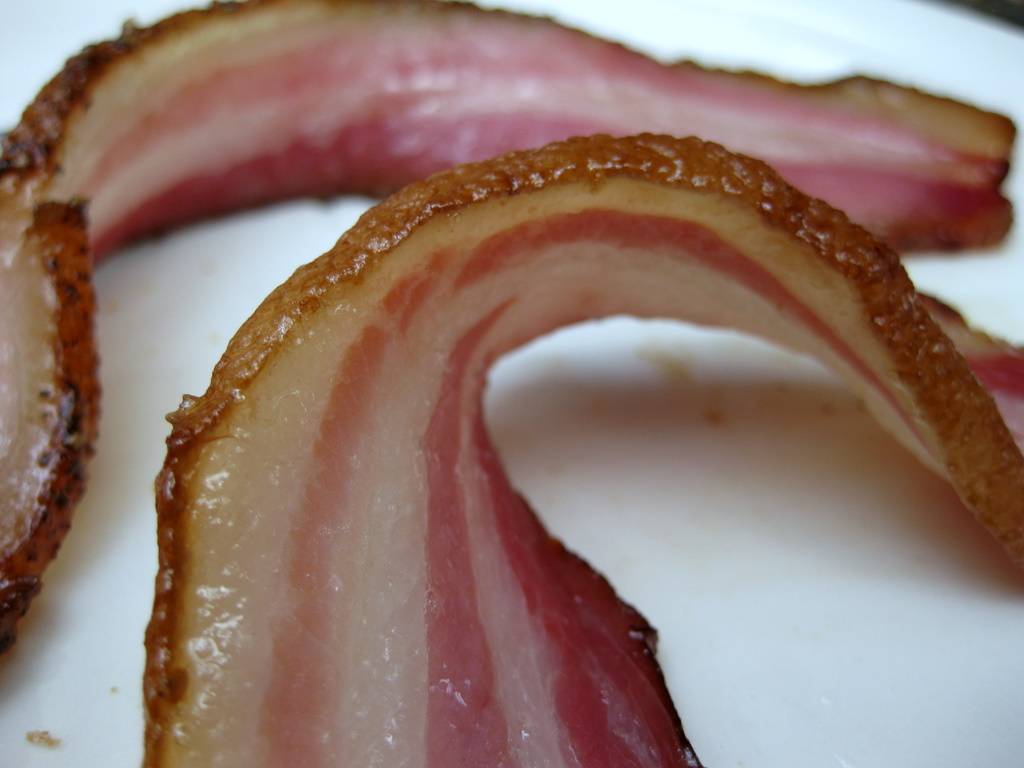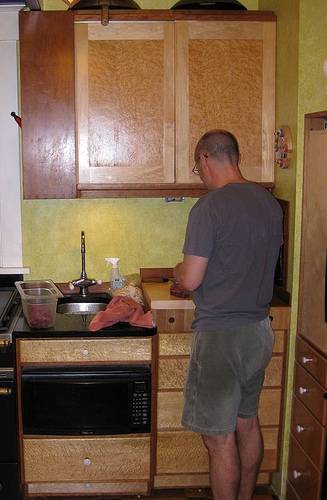 You may already know Laurence Mate, but if you don’t, you can see an introduction in Learning the art of Charcuterie. He’s an artisan in every sense. His woodworking is impressive, because he’s choosing great raw materials. His culinary endeavours are just as enticing for the same reasons. For Laurence, it’s about the entire journey, not taking shortcuts. He strives to bring the best ingredients together using processes that are more about creating a superb finished product rather than just getting the job done.
You may already know Laurence Mate, but if you don’t, you can see an introduction in Learning the art of Charcuterie. He’s an artisan in every sense. His woodworking is impressive, because he’s choosing great raw materials. His culinary endeavours are just as enticing for the same reasons. For Laurence, it’s about the entire journey, not taking shortcuts. He strives to bring the best ingredients together using processes that are more about creating a superb finished product rather than just getting the job done.
Sometimes, when looking for the best, or hard-to-find ingredients, you’ll need to wait. Laurence worked with a local farmer to be able to get his hands on hogget (meat from an older, castrated male sheep). Because of the nature of his request, he’ll be waiting one to two years to get what he’s looking for. It brings a new meaning to “Slow Food.” A lot of Laurence’s gustatory adventures involve making charcuterie that takes days, weeks, or months to become a finished product. In today’s society, most people just don’t want to wait that long for their food.
Sitting on the porch overlooking his lush backyard, we talked about how what he does with meat is a dying art. The modern big box, fast food fixation with fast, easy, cheap food has nearly bankrupt our society of any genuine appreciation for food. Certainly with our nation’s expanding waistlines, people love eating, but it seems like more and more people don’t like to think about tasting and enjoying their food. Many people I know think that cooking takes too long, ingredients are too expensive, and the skills required are too much to handle.
 Food is about more than just making some stuff to eat. Though they are all necessary, buying ingredients, chopping them up, and cooking them are just small parts of the culinary experience. There are plenty of books and blogs telling you that you should know more about where your food comes from. With all the food contamination outbreaks we’ve seen from large corporate food manufacturers, this is sound advice. There are other ethical and environmental concerns to consider as well.
Food is about more than just making some stuff to eat. Though they are all necessary, buying ingredients, chopping them up, and cooking them are just small parts of the culinary experience. There are plenty of books and blogs telling you that you should know more about where your food comes from. With all the food contamination outbreaks we’ve seen from large corporate food manufacturers, this is sound advice. There are other ethical and environmental concerns to consider as well.
Laurence suggests, paradoxically, that one reason people today eat so much meat is because it’s bad. Not rotten, necessarily, but flavorless, mushy, and often prepared poorly. Without the satisfaction of the intensely flavorful, chewy, well-prepared protein, many of us just eat more meat in an attempt to find what’s missing. Some of the ideas Laurence has recorded in his Meat Manifesto appear revolutionary to many, going so far as to suggest that meat should cost more, but we should eat less of it. In the years that he has been practicing his charcuterie and other masterful meat manipulations like barbecue, Laurence and his family eat about half as much meat as they used to.
While meaty musings are his main attraction, Laurence regularly discusses food issues on his site, sometimes inciting heated discussions. Many of his posts focus on local food issues, discussing how regulations and marketing aren’t helping the small, local farms that provide what he feels are the best products available. Whether it’s about licensing costs that are too high for a small farm to sell at a farmers’ market, or meat lockers not willing to age meat to its highest potential, Laurence — blogging as his alter-ego “Larbo” — brings eloquent and insightful commentary that draws readers in.
I will close by shamelessly pasting in an excerpt of an email from Laurence discussing how and why he wants to keep up with old traditions.
When you lose skilled farmers, skilled butchers, skills in the kitchen (of which charcuterie is just one small part), as we’ve been doing for the past century, you can’t just conjure them up when you need them. When you lose the people, you lose the local knowledge, the acquired skills, the traditions of a place or a craft-all the accumulated cultural capital of centuries-and that’s not easy to recover or recreate. Reading a book from the library is not going to give you the knowledge that people used to have in their eyes, ears, taste, and touch. And that’s how I think of myself-both with the woodworking and with the charcuterie-as someone practicing a dying craft, trying to learn, preserve, and recover some small part of the knowledge and skills that used to be part of a common heritage.








